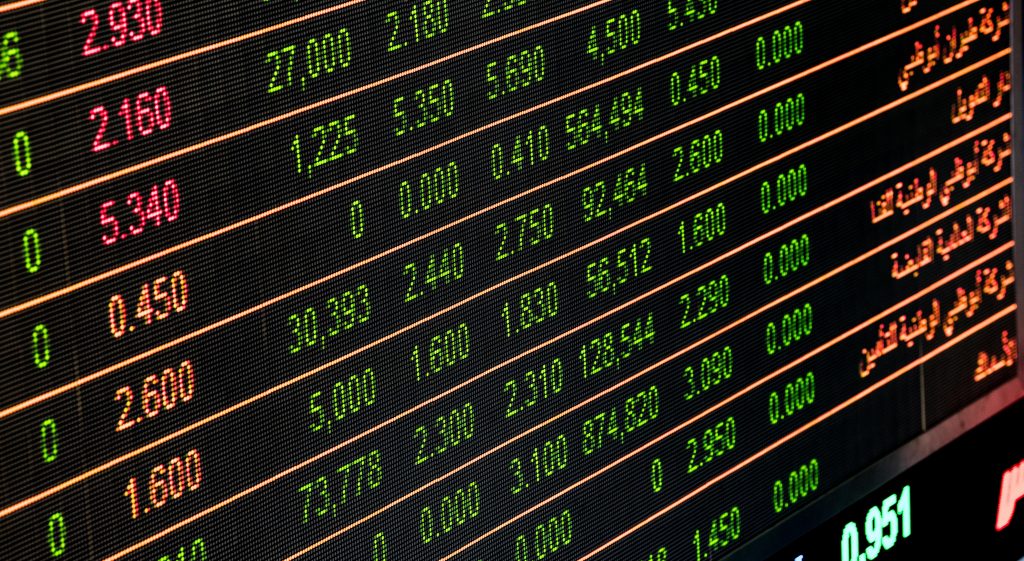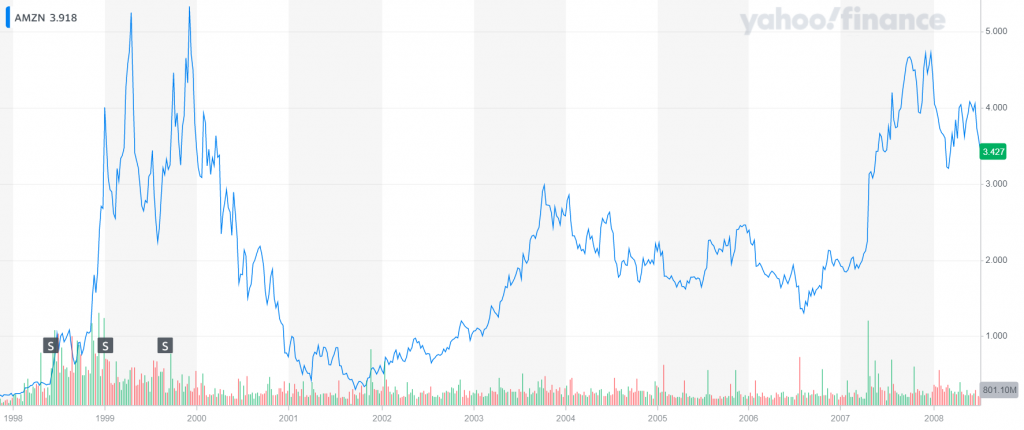Following the 2020-2021 bull market, the stock market has taken a brutal dip. But every crisis presents an opportunity. In this case, the chance to buy at a discount and diversify your wealth. Fortunately, you can make such an investment while fighting against climate change. How? Through green energy stocks & solar stocks!
So, if you want to buy some solar stocks for example, how should you go about considering them for your portfolio?
In this article, we will give you an overview of one approach to investment and how you can apply this to six solar stocks listed on the NYSE.
Table of Contents
Determine Your Solar Stock Investment Style And Horizon

You might have heard that the fundamental goal of the stock market should be to “buy low, sell high.”
However, it’s a glib statement and obscures the complexity of investing in such a market.
Knowing when a stock is cheap or overpriced isn’t easy. Neither is knowing when to sell It also ignores the psychological and emotional strength needed to resist the irrational impulse to buy or sell just because “that’s what everyone else is doing.”
Furthermore, determining a company’s worth and having a sense of whether the market has under-priced or over-priced a particular solar stock isn’t a straightforward process.
ETFs Vs. Direct Investing
The first question you should ask yourself is whether or not you’re genuinely able to devote the time to picking individual solar stocks. The Securities and Exchange Commission (SEC) has excellent resources to help determine which course suits you.
However, if you’re time-poor, purchasing shares in an Exchange Traded Fund (ETF) is an alternative to picking individual stocks. But what is an ETF?
An ETF is a basket of various stocks purchased on your behalf by a fund manager.
There are thousands of ETFs, and they are typically based on:
- Sector: such as the airlines ETF JETS. This ETF only buys the airline stocks.
- Country: such as the S&P 500-based ETF, VOO. This ETF only buys the top 500 companies listed on the NYSE.
- Other: such as Kathy Woods ARK ETF, which combines a wide range of pre-profit companies.
There are a number of solar energy or renewable energy ETFs, such as the ETF TAN. These ETFs contain many solar stocks, giving you a cheap and convenient way to invest in solar.
Picking individual solar stocks is also referred to as direct investing. In this instance means you’re buying stocks in one company.
It requires that you research the company and make an informed decision about whether it’s the right time to buy that stock.
Trading Vs. Investment
Trading — also known as technical analysis — is an investment style based on analyzing short-term stock price charts to determine when to act. It relies on various metrics to decipher the shorter and longer-term movements of volume and stock price.
It’s time-consuming and means you must keep tabs on the stock market’s daily or even hourly movements — trading is unlikely to suit you unless you want to adapt your lifestyle to it.
Investment — also known as fundamental analysis — is an investment style based on determining a company’s intrinsic value. You only buy the stock when the market value is below your valuation. The process is as follows:
- Calculating the value of a company;
- Comparing your valuation of a company against the value on the stock market;
- Estimating how risky it would be to buy now by changing your valuation assumptions and noting the change in your valuation
- Buying when the stock market value is lower than your valuation;
- Updating your valuation as conditions change;
- Selling when the stock market value is higher than your valuation.
Warren Buffett is a famous “fundamentals” investor. He famously said he would not care if the stock market was “turned off.”
In Reality
There is a spectrum between the extremes of chart-driven trading and extreme long-term investment. In this article, we’ll present an investment approach based on fundamental analysis.
How To Value Solar Stocks
Recognize That Solar Stocks Can Be Overvalued
What is something worth?
For consumer products, it’s relatively simple: review the prices on eBay or Amazon, and you have a range of values for a given product. You then choose accordingly.
The same principle applies to buying solar stocks; you should not purchase overpriced stocks any more than you should pay $100 for a gallon of milk. In effect, you gain nothing by overpaying for something.

Source: finance.yahoo.com
For example, in 1999, Amazon’s stock price reached a high of $106. The market then crashed, and the stock price fell to $7. Eleven years then passed before Amazon’s stock price returned to $106. If you had bought the stock at the high point, you would have had to wait 11 years to break even.
So, it follows that you can buy stocks at a price that is too high.
How Do You Determine Whether Or Not A Solar Company Is Overpriced?
A company is dynamic and consists of people, a brand, stock, and potential. Some of these are intangible or are expectations about the future. So, how can you value a solar company with so many different factors to consider?
Pick Your Valuation Method
There are many ways of valuing a company, and there is not enough space in this article to cover all of them in depth. Consequently, we recommend that you educate yourself on the subject widely. There are many valuable books and YouTube videos on the subject.
Your chosen method depends on your financial knowledge and capacity to take risks.
- Low risk, low knowledge? You should value companies based on their liquidation value, i.e., the value that would remain after liquidators administer and sell the company. This ignores intangibles like brand value.
- Medium risk, medium knowledge? You should conduct a valuation based on metrics and a simple valuation calculation.
- Higher risk, higher knowledge? You should construct a discounted cash flow model based on your understanding and expectations of future cash flow growth for the company. This approach prices in assumptions about the future of the company.
In short, these three methods will give you a total value for the company, which may be in the billions or millions of dollars.
Simple Valuation Metrics
In addition to the above valuation approaches, simple metrics can be a guide. The table below lists some commonly used metrics to evaluate solar stocks. Financial news websites like Bloomberg or Yahoo Finance publish these metrics.
| Metric | Definition | Comment |
|---|---|---|
| Trailing Price to Earnings Ratio | Current Market Capitalisation / Last 12-month earnings | This metric indicates whether a stock may be overvalued. It represents how many dollars you must pay for $1 of earnings. A low value indicates the stock may be undervalued. |
| Price to Free Cash Flow Ratio | Current Market Capitalisation / Last twelve months of free cash flow | This metric indicates whether a stock may be overvalued. It represents how much you must pay for $1 of free cash flow. A low value indicates the stock may be undervalued. |
| Current ratio | Current assets / current liabilities | This metric indicates how financially solid a company is in the short term. A value greater than 1 indicates that the company is financially stable. |
In summary, you can use the above metrics to assess a company’s financial health and stock price. But, many other metrics exist.
Take Account Of Share Dilution
You should pay attention to “shares outstanding,” which is the term for the total shares issued by the company.
Shares outstanding will increase if the board of a company decides to issue more shares. The increase in shares lowers the share price, which devalues your investment.
The reason this matters can be clarified by an example:
Let’s say you own 10 shares in a company, and there are 20 shares outstanding in total; this gives you 50% ownership of the company. If the board issues a further 10 shares, you now only own 33% of the company.
This reduction in your ownership is called dilution, and it’s critical to be aware of it. If the board decides to issue shares after you buy the stock, your investment could dramatically lose value.
Yahoo Finance and other financial news websites include historical trends in shares outstanding, allowing you to determine if the board of a company has a habit of issuing new shares. If they do, you should apply a reduction to your company valuation to reflect the risk of dilution.
How To Decide When To Buy Solar Stocks
Your fundamental goal with purchasing a solar stock should be only to buy when the company’s market capitalization is lower than your own valuation.
Market capitalization is the current stock price multiplied by the total outstanding stock (“shares outstanding”). Therefore, it is the price you would pay if you were to buy all of the publicly available stock.
Market capitalization is listed on most financial news pages, such as Yahoo Finance. It’s relatively easy to find any publicly listed stock.

How Low Should Market Capitalization Be Before You Buy?
The gap between market capitalization and your valuation is often called your “margin of error.”
A large, blue chip company — such as Hewlett-Packard — is safer to buy with a smaller margin of error; it’s such a large, stable company that its market capitalization is not likely to change dramatically.
Small, more volatile, and newer companies are only advisable to buy when your margin of error is more significant. This means you have more protection against any downside — i.e., the market not recognizing the value you see and, as a result, not giving you expected returns.
How To Decide When To Sell Solar Stocks
It’s tough to know when to sell. Greed and fear take over: are you selling too early? Could the price go up further?
The decision to sell will be a combination of your risk tolerance and the extent to which you think the market overvalues the solar stock.
Here are common metrics or triggers that’ll assist you with selling:
- You have achieved your target return on the solar stock;
- The P/E ratio of the stock is above 40;
- Macro conditions have worsened and will retard the company’s growth;
- Some event has occurred which, in your opinion, will seriously harm the company’s future. This could be fraud, loss of a CEO, patent challenges, failure to get project approval, or a dud product — businesses fail in many ways!
You should never ever sell just because the market is dropping; this is why successful investing is partially about psychological strength — resisting the urge to irrationally drop a solar stock just because the share price fell.
Analyzing 6 Solar Stocks
In this section, we’ll analyze six solar stocks listed on the NYSE.
1. Enphase Solar Stock (ENPH)
Enphase Solar designs, develops, manufactures, and sells home energy solutions for the solar industry in the US and internationally. The company sells its solutions directly to solar distributors, large installers, original equipment manufacturers, strategic partners, and homeowners.

- Market cap: $24.946 billion
- Shares outstanding: 135 million
- P/E ratio: 161
- P/FCF: 77.2
- Current stock price: $193.29
- Valuation stock price: $36.30
- Ratio of market cap to valuation: 5.31x
Our analysis indicates that Enphase is significantly overvalued.
2. First Solar Stock (FSLR)
First Solar designs, manufactures, and sells cadmium telluride solar modules that convert sunlight into electricity. It serves developers and operators of systems, utilities, independent power producers, commercial and industrial companies, and other system owners.

- Market cap: $7.11 billion
- Shares outstanding: 106.58 million
- P/E ratio: 31.86
- P/FCF: -23.8
- Current stock price: $67.60
- Valuation stock price: -$94.90
- Ratio of market cap to valuation: n/a
First Solar has a negative P/FCF due to the company making capital investments over the past 3 years. Our analysis indicates it may be overvalued.
3. Canadian Solar Stock (CSIQ)
Canadian Solar designs, develops, manufactures, and sells solar ingots, wafers, cells, modules, and other solar power and battery storage products in Asia, the Americas, Europe, and internationally.

- Market cap: $1.969 billion
- Shares outstanding: 64.27 million
- P/E ratio: 24.02
- P/FCF: -6.1
- Current stock price: $31.26
- Valuation stock price: -$354.70
- Ratio of market cap to valuation: n/a
Our analysis indicated that Canadian Solar is currently overvalued. It has a negative P/FCF due to the company making capital investments over the past 3 years and is running at a negative operating cash flow.
4. SolarEdge Stock (SEDG)
SolarEdge designs, develops and sells direct current (DC) optimized inverter systems for solar photovoltaic installations worldwide. The company offers inverters, power optimizers, communication devices, and smart energy management solutions used in residential, commercial, and small utility-scale solar installations.

- Market cap: $15.254 billion
- Shares outstanding: 55.39 million
- P/E ratio: 88.14
- P/FCF: 739
- Current stock price: $280.40
- Valuation stock price: Negative, $108.60
- Ratio of market cap to valuation: n/a
Our analysis indicated that SolarEdge is currently overvalued.
5. ReneSola Stock (SOL)
ReneSola develops, builds, operates, and sells solar power projects in the United States, Canada, Europe, and internationally. The company also develops community solar gardens; and sells project rights.

- Market cap: $328.289 million
- Shares outstanding: 67.13 million
- P/E ratio: 83.67
- P/FCF: -5.39
- Current stock price: $4.58
- Valuation stock price: $3.80
- Ratio of market cap to valuation: 2.54x overvalued
6. Sunrun Stock (RUN)
Sunrun designs, develops, installs, and maintains residential solar energy systems in the United States. It also sells solar panels, racking, and battery storage. Its primary customers are residential homeowners.

- Market cap: $5.007 billion
- Shares outstanding: 210.11 million
- P/E ratio: 1070
- P/FCF: -0.76
- Current stock price: $23.44
- Valuation stock price: Negative: -$237.70
- Ratio of market cap to valuation: n/a
Our analysis indicated that Sunrun is currently overvalued.
The NYSE includes other solar stocks. International stock markets also include other solar stocks, but the same fundamental principles of stock analysis we have covered still apply.
Final Thoughts
In conclusion, solar stocks may have a place in your portfolio depending on your risk appetite, investment approach, and horizon.
This article has outlined a possible investment approach and provided examples of solar stocks listed on the NYSE.
Investing demands life-long learning, and we recommend you pursue books, courses, and professional advice to help you reach your financial goals.

